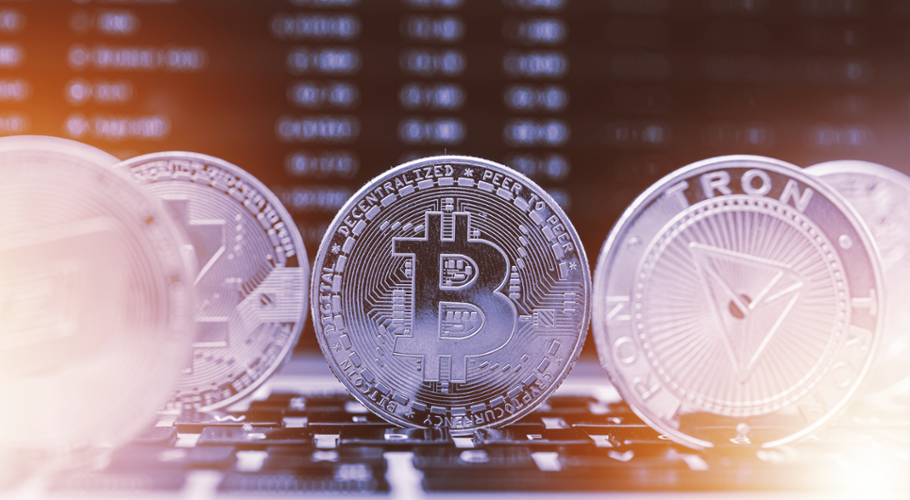Fixed interest resurgence fuels ETF innovation, inflows
Exchange traded funds (ETFs) with a focus on fixed interest were among those that benefited most from renewed appetite for fixed interest over the past 6 months as investors looked to build allocations to an asset class that suffered an atypical decline in 2022.
AUSIEX sampled a large cohort of its data, which showed a 24.48% per cent increase in fixed interest ETF buy trades and a 2.99% increase in average buy trade size in the 6 months to December 31 2022, with a mixture of floating rate, government, corporate and composite Bond ETFs making up the top 10 bought securities. Across trades sampled (both buy and sell side), the overall buy/sell ratio jumped from 46.3% to 63.57%, and the net traded value strongly positive.
The trading volumes highlight the potential opportunities that ETFs provide in a market like Australia that lacks a deep and easily accessible direct bond market for retail investors. The variety of available ETFs makes it possible to construct a properly diversified fixed interest portfolio almost entirely through these vehicles, which have the additional advantage of being products that many investors understand and are confident to hold.
Bonds historically perform better in periods when share markets suffer losses, but the two asset classes declined in tandem last year as central banks pushed interest rates significantly higher to curb inflation. It was the first time since 1928 that both equities and fixed income dropped more than 10 per cent.
Expectations that central banks would ease rate hikes over 2023 is driving hopes that fixed interest will fare better this year and resume its position as the defensive element that offsets the volatility that is the norm for share market investments. Advisers report continued interest from their clients about opportunities in fixed income and the outlook for 2023, though the hawkish tone from the Reserve Bank of Australia when announcing its latest rate increase may dampen sentiment.
AUSIEX sampled a large cohort of its holdings data as at 28 February 2023, which showed Advisers accounted for a significantly higher proportion of total holdings value compared with self-directed investors, and baby boomers showed by far the strongest preference for the asset class, followed by Generation X. In terms of specific securities, Vanguard’s Australian Fixed Interest Index ETF (ASX: VAF) accounted for the lion’s share of total holdings value, followed by the same issuer’s International Fixed Interest Index (Hedged) ETF (ASX: VIF), I-Shares Core Composite Bond ETF (ASX: IAF) and Van Eck’s Australian Floating Rate ETF (ASX:FLOT), and BetaShares Australian Bank Senior Floating Rate Bond ETF (ASX:QPON).
What are the returns on fixed interest ETFs?
There are more than 20 ETFs listed on the ASX that give investors access to all quarters of the local fixed income market, including Australian government bonds, investment grade corporate bonds, inflation linked bonds, floating rate bonds and composite investments which combine different sections of the market.
Among the biggest products, the Vanguard Australian Fixed Interest Index ETF (ASX: VAF) produced a 2.17 per cent total return in the three months to January 311, as did the iShares Core Composite Bond ETF (ASX: IAF)2.
There are also more than a dozen global fixed interest ETFs on the ASX that allow investors to tap all areas of the international market, again ranging from conservative US treasuries to high yield bonds and ethically invested assets.
ASX listed fixed interest ETFs
| Ticker | Name |
| IAF | iShares Core Composite Bond ETF |
| VAF | Vanguard Australian Fixed Interest ETF |
| VGB | Vanguard Australian Government Bond Index ETF |
| VCF | Vanguard International Credit Securities Index (Hedged) ETF |
| XARO | ActiveX Ardea Real Outcome Bond Fund (Managed Fund) |
| QPON | BetaShares Australian Bank Senior Floating Rate Bond ETF |
| VIF | Vanguard International Fixed Interest Index (Hedged) ETF |
| VBND | Vanguard Global Aggregate Bond Index (Hedged) ETF |
| IHCB | iShares Core Global Corporate Bond (AUD Hedged) ETF |
| GBND | BetaShares Sustainability Leaders Diversified Bond ETF - Currency Hedged |
Source: ASX (February 6, 2023)
New funds keep coming
Half a dozen new fixed interest ETFs were launched in 2022 as providers sought to broaden the scope of assets and investment philosophies available.
In the international space, the index-tracking Global X US Treasury Bond ETF (Currency Hedged) (ASX: USTB) was listed in July and is benchmarked against the iBoxx $ Treasuries Index (AUD Hedged). It provides exposure to US treasuries ranging from 1-year to 30-year maturities and produced a total return of 4.02 per cent in the three months to February 33.
There are also now several global fixed interest funds which use ESG principles following the listing of the iShares Global Aggregate Bond ESG (AUD Hedged) ETF (ASX: AESG) on the ASX in August. It produced a 3.24 per cent total return in the three months to January 31 and tracks an index that measure the AUD hedged performance of global investment grade ESG screened bonds4.
Several of the new products appear to be part of a trend in which global investors are increasingly using ETFs to allocate capital to non-core sectors of the fixed interest market. A State Street Global Advisers survey of 700 institutional investors and investment decision makers released in October 2022 found that 62 per cent of investors who planned to increase exposure to high-yield corporate credit over the following 12 months said it was likely they would use ETFs to do so, and 53 per cent indicated they would employ the same strategy for emerging-market debt5.
In local fixed interest, Betashares launched an Australia Composite Bond ETF (ASX: OZBD) last February that tracks the Bloomberg Australian Enhanced Yield Composite Bond Index. This index takes an intelligent investment approach by weighting bonds on the basis of their risk-adjusted income potential rather than debt-weighting, aiming to provide investors with higher returns than the most commonly used Australian fixed income benchmark, the AusBond Composite Index.
It returned 3.4 per cent after fees in the three months to January 316.
For income-focussed advisers and investors there are plenty of heavily-traded options available via exchange traded funds to gain diversified exposure to a range of both domestic and international asset types to maintain and protect income. With the conditions in much of the latter half of the 2022 calendar year still prevailing in 2023, we may well see interest in these ETFs continue to rise.
References:
1 https://www.vanguard.com.au/adviser/products/en/detail/etf/8207/bond
2 https://www.blackrock.com/au/individual/products/251977/ishares-core-composite-bond-etf
3 https://www.globalxetfs.com.au/funds/ustb/
4 https://www.blackrock.com/au/individual/products/328186/ishares-global-aggregate-bond-esg-aud-hedged-etf#overview
5 The Role of ETFs in a New Fixed Income Landscape (ssga.com)
6 https://www.betashares.com.au/fund/australian-composite-bond-etf/

